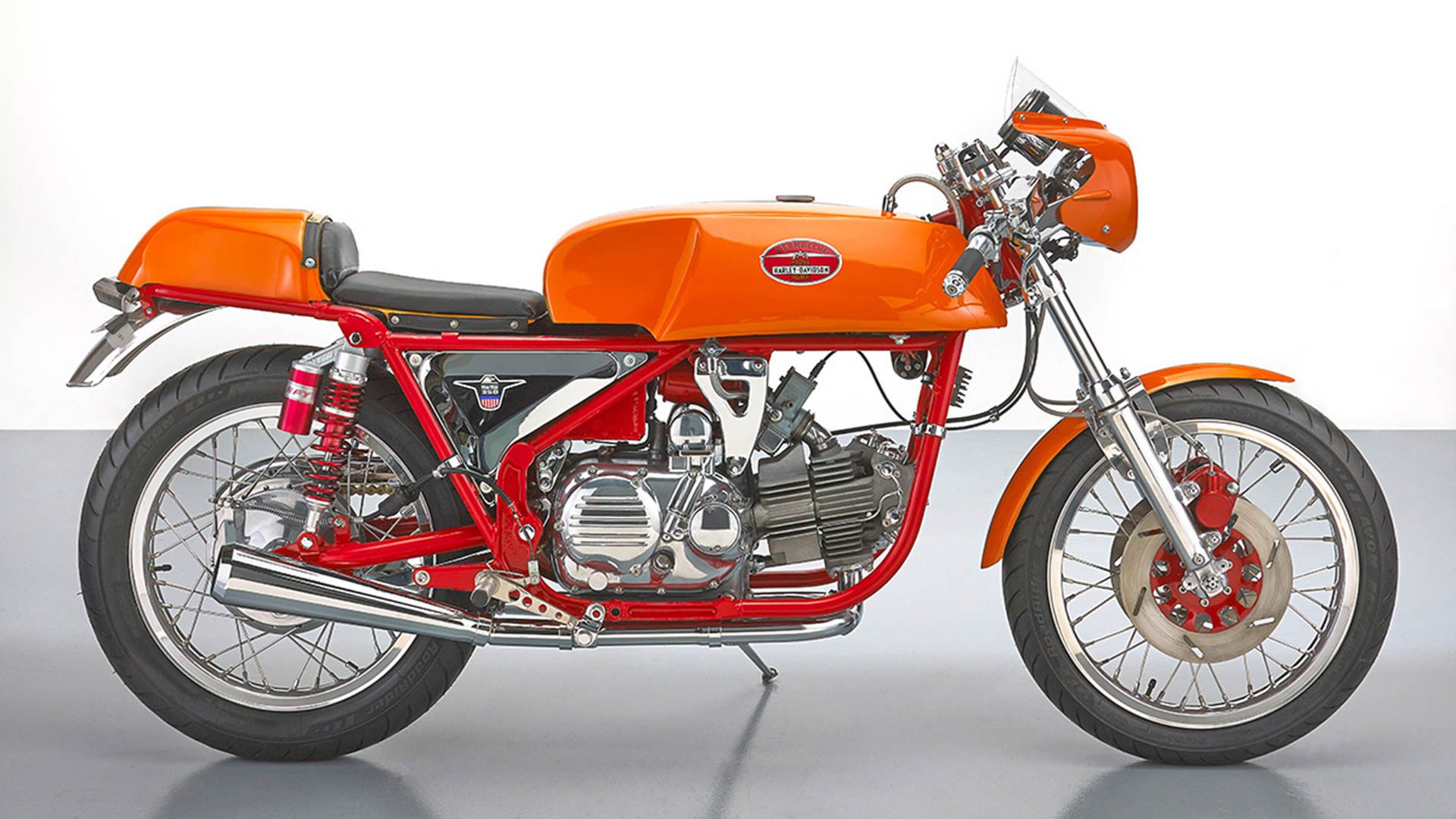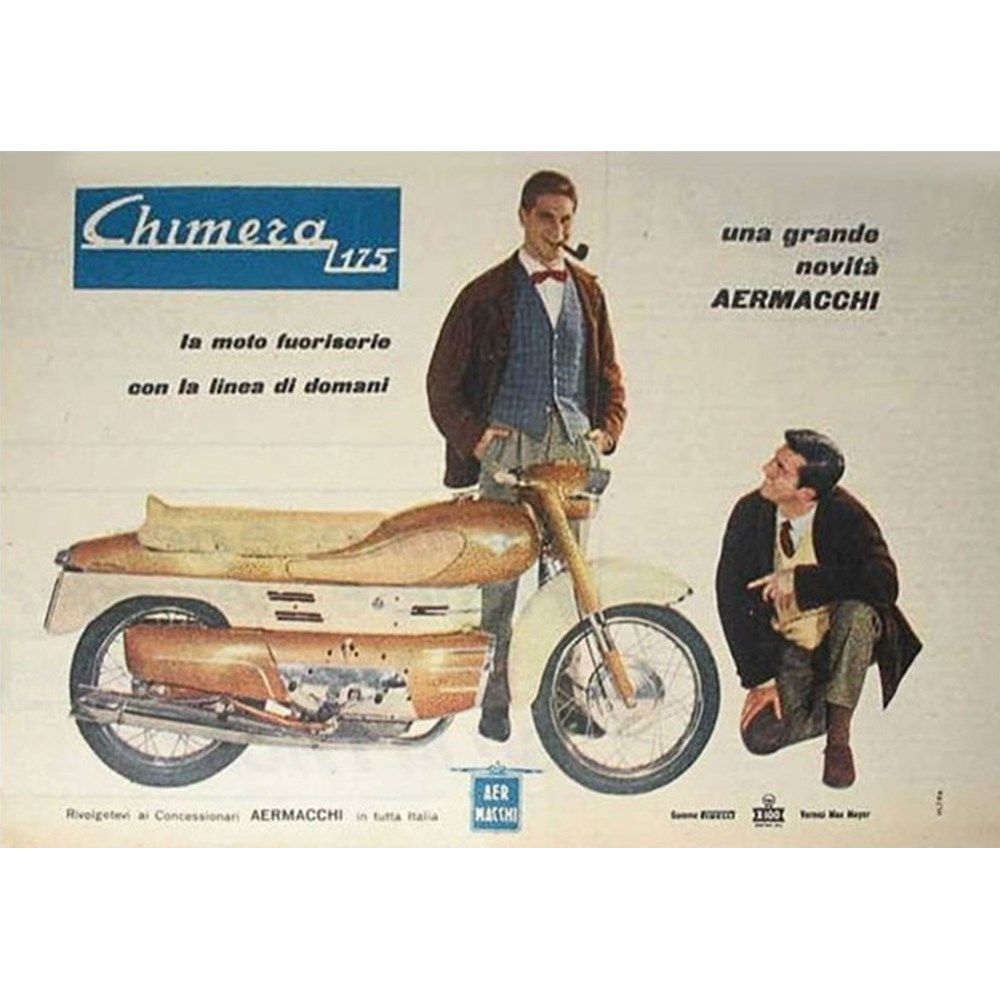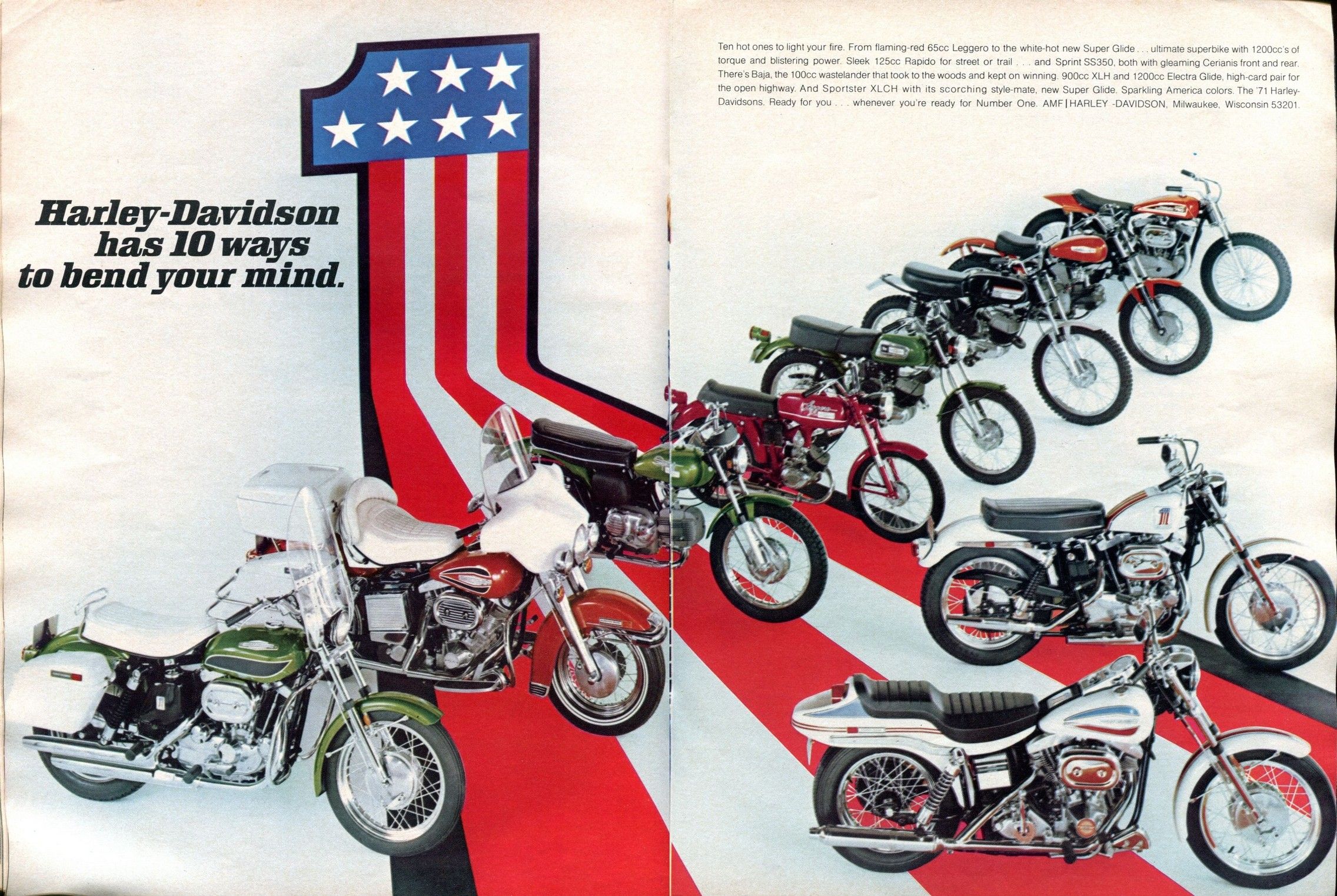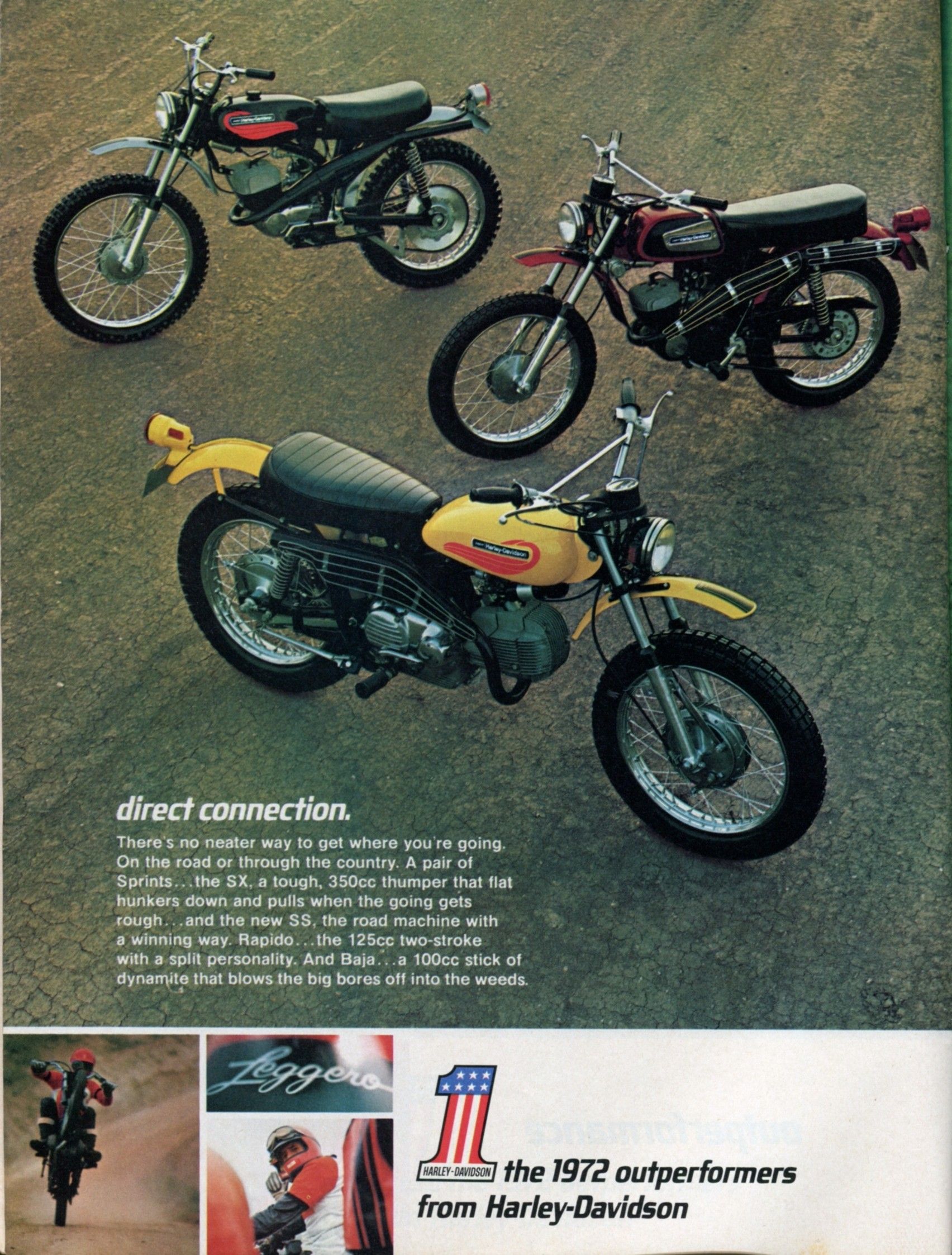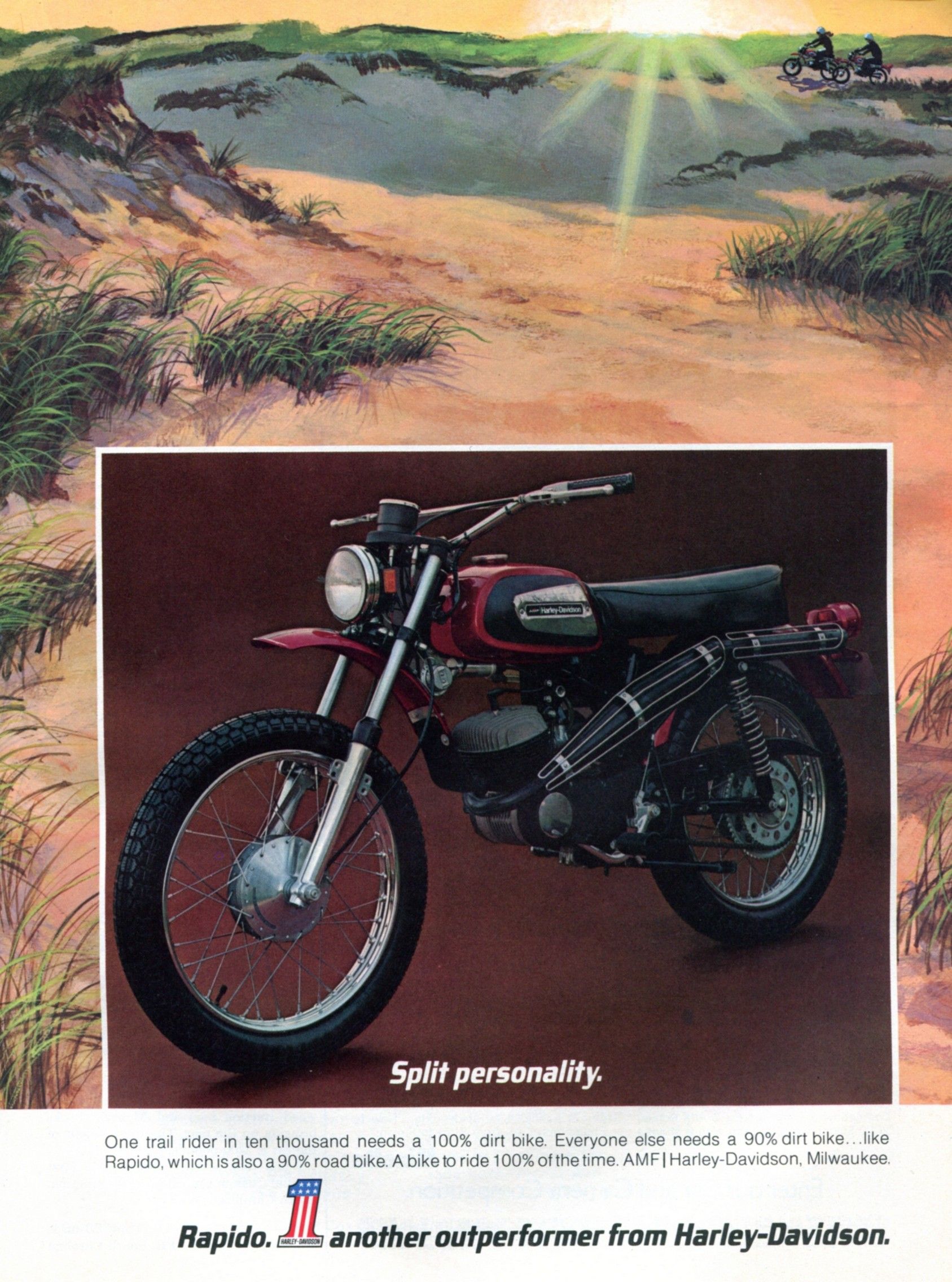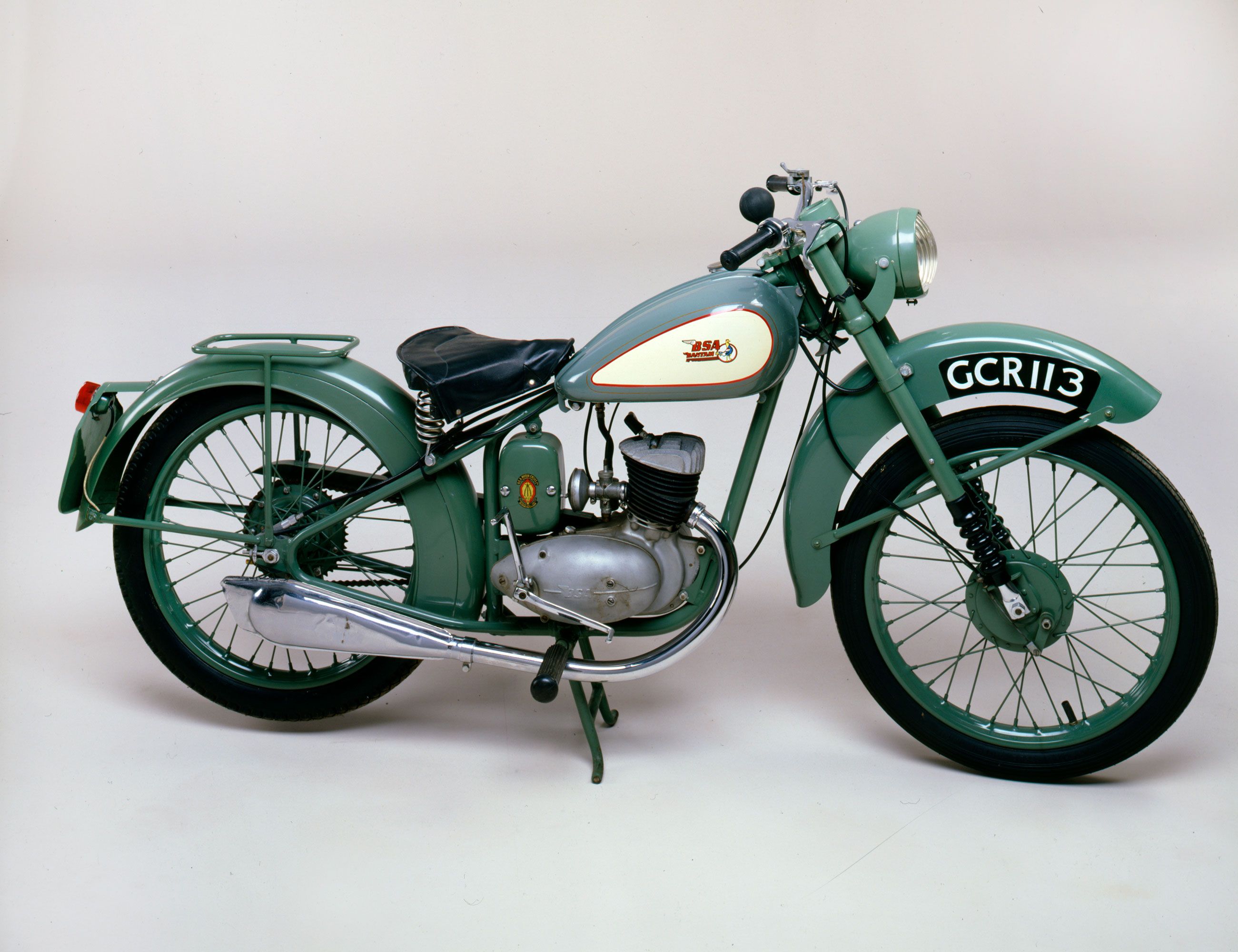Harley-Davidson’s recent entry into the adventure motorcycle class is not the first time the iconic American motorcycle manufacturer has taken a left turn, and offered motorcycles that are the complete opposite of their standard V-Twin cruisers.
In the early 1970s, the company bought 50% of Italian manufacturer Aermacchi in order to have access to alternative engineering. This would enable Harley-Davidson to offer small-displacement motorcycles to plug a gap in their model line-up and counter competition from overseas manufacturers. It wouldn’t last, but while it did, it was an interesting diversion, and an important chapter in Harley’s history.
8 The Aermacchi Story
Aermacchi has its origins in the Macchi company, formed in 1912 as an aircraft manufacturing company. The name changed to Aeronautica Macchi and then, in the late 1940s, the name was changed to Aermacchi. It branched out into vans, trucks and, by 1951, motorcycles as well. The company was based in Varese, northern Italy, home to the Italian aeronautical industry, which was attracted to the town by the proximity of a large lake, essential in the days when seaplanes and flying boats were popular. The concentration of engineering skill lent itself to other industries and the town became the home of MV Agusta, Aermacchi, Cagiva, SWM, and briefly, Husqvarna (while they were owned by BMW).
7 Aermacchi Motorcycles Make An Impression
The company started by manufacturing large-wheeled scooters, with 125cc two-stroke single-cylinder engines. In 1956, an overhead valve 175cc four-stroke engine was designed, which featured a horizontal cylinder, in the style of Moto Guzzi engines. The biggest advantages in using the flat cylinder layout were compactness and a low center of gravity, which made the handling something to write home about when mated with suspension from Italian specialists Ceriani or Marzocchi.
Sticking the single cylinder out in the open made for better engine cooling, too. The first model was called the Chimera and the engine produced 13 horsepower. It had a roller bearing bottom end, alloy head, a generator, coil ignition, wet sump lubrication, a four-speed transmission, multiplate clutch and helical gear primary drive.
6 Harley-Davidson Needed A Small Motorcycle
By the late 1950s, spearheaded by the success of the diminutive Honda Super Cub, small-displacement motorcycles and scooters were gaining a toe-hold in the motorcycling market, being attractive - and clean! They were as much a contrast as an alternative to the heavy roadsters and cruisers being manufactured by American and British manufacturers. Harley had decided it needed smaller capacity bikes for its US customers. A UK partnership was ruled out as British manufacturers already had strong sales in the US and were selling big bikes that competed with Harley’s V-twins.
5 Big Money Acquisition
Willie G Davidson turned his attentions to Italy. He considered Ducati, Parilla, Benelli and Gilera, but as they had US importers already, they were dismissed. After deciding Moto Guzzi designs were too dated, he settled on Aermacchi and bought 50% of the company for $250,000 in 1960. In 1972, when AMF owned Harley-Davidson, the remaining 50% of Aermacchi was purchased. This arrangement lasted until 1978, when Aermacchi was sold off to Cagiva.
4 The First Aermacchi Harley-Davidsons
The first product of the partnership was a touring version of the 250 Ala Verde, sold as the Ala Bianca in Italy and rebadged as the Wisconsin for U.S. buyers.This proved popular as a street scrambler too, badged the Sprint H. The 250s went through slight stylistic changes through the 1960s and were joined in 1964 by a long stroke 350cc single, also called the Sprint.
Between 1960 and 1978, a total of ten different models were launched, ranging from 50cc up to 350cc, both two-stroke and four-stroke. After the AMF takeover of Harley-Davidson, the Aermacchi name was dropped and the small single-cylinder bikes were badged AMF Harley-Davidson.
3 AMF Harley-Davidson Racing Success
Unlikely as it may seem, Harley-Davidson decided to go road racing with the Aermacchi Harley-Davidson motorcycles, in the 250cc and 350cc Grand Prix classes. In 1966, Renzo Pasolini was third in the 350cc championship, with teammate Alberto Pagani sixth. In 1968, American Kel Carruthers, who would later go on to manage Kenny Robert’s success in 500cc grand Prix racing, finished third in the 350cc championship and second in the 125cc Lightweight TT class at the Isle of Man. But the 1970s were the glory years, Walter Villa winning the 250cc championship in 1974, ’75 and ’76, finishing third in 1977 and taking the 350cc crown as well in 1976. It was the start of the American invasion of Grand Prix racing, for riders at least, that would continue through the 1980s and early 1990s.
2 Aermacchi Harley-Davidson Models
Aermacchi Harley-Davidsons - and later AMF Harley-Davidsons - came in a variety of styles and engine displacements. The first to appear was the Sprint in 1961, which had a 250cc, four-stroke engine and conventional motorcycle styling. The M50 and M65 had two-stroke engines of 50 or 65cc and either step-through design or a roadster with conventional gas tank and a dual seat. The X-90 Shortster resembled the Honda Monkey bike, while the Rapido had a 125cc four-stroke and later a two-stroke engine with road racer styling. SS and SX models had off-road styling and were powered by 350cc two- and four-stroke engines. In 1977, the MX250 motocross bike appeared, but it was heavy in comparison to rival products from the likes of Bultaco, Husqvarna and the fast improving Japanese offerings.
1 This Wasn’t Harley’s First Small Displacement Motorcycle
Way before the purchase of Aermacchi, immediately after the Second World War, Harley-Davidson had played a part in the small-displacement motorcycle market. As War Reparations from Germany, the drawings for the lightweight motorcycle were sent to America, Britain and Russia. In Britain, it became the BSA Bantam (pictured), with an estimated 500,000 being built. In Russia it became the MMZ M-1A Moskva and, in America, it was badged as a Harley-Davidson.
The 1947 Model had a 3 horsepower 125cc two-stroke engine and a three-speed transmission. 10,000 were sold in the first seven months of 1947. Subsequent models included the Super 10, the Ranger, the Hummer, the Pacer, the Scat and the Bobcat, with engine displacements ranging from 125cc to 175cc, all of which were two-strokes. Production of these models ceased in 1966, by which time Harley was already heavily involved with their Aermacchi project.

